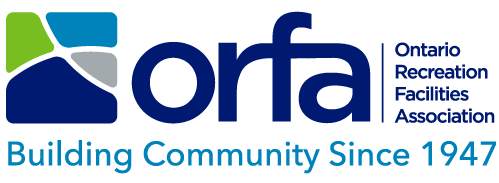- ORFA Home
- Resource Centre
- Technical Corner
- Ice Maintenance Standard or Guidance
Technical Corner
Ice Maintenance Standard or Guidance
August 19, 2024
Member Question
I’m trying to find a standard on how often ice maintenance should be performed? We perform ice maintenance daily and require explaining why we perform what is perceived to be above and beyond the ORFA standard.
ORFA Shares:
It is first important to understand that the ORFA does not set “standards” but rather offers “industry best practices” for our members to consider adopting in their operations. We realize this a fine, yet important line that we walk but it is never our intent to tell our members how to conduct business.
Ice maintenance best practices have significantly evolved over the past years. You may recall when the ORFA promoted the scheduling of 8-hours of weekly ice maintenance. Usually Mondays after heavy weekend use. This was rooted in the practice of ice resurfacer operators either cutting too much or too little ice and ice sheet repairs were required. This was further supported by a lack of ice resurfacer maintenance and adjustment. Time marched on and operators better understood their role, equipment, and the benefit of a quality equipment maintenance plan. In addition, technology advanced and the introduction of items such as, but not limited to, flood water control, laser leveling, and onboard maintenance monitoring options emerged.
Creating an ice maintenance schedule must be designed site specific with supervisory staff considering the following variables when creating a Standard Operating Practice (SOP).
- Industry best practice is that ice maintenance occurs every resurfacing. We focus in on what goes down, must come up. Meaning if an operator is dropping 90 gallons of water on a flood, then 100 cubic feet (3/4 of a traditional snow dump box) must be collected. The better they do at that, the less dedicated ice maintenance will be required.
- There was a time ORFA recommended 1¼" to 1½" of ice be maintained – this shifted more than 10-years ago to where we no longer give these benchmarks but rather recommend that ice thickness be calculated based on type and calibre of user. If the facility has high calibre skating events, then 2 or 3 inches of ice may be required to keep a safe skating environment.
- Once the ice thickness SOP is set, then operators need to understand that this is the target ice thickness at the end of a shift or event.
- Industry best practice is that the ice sheet should be edged no less than every 12 resurfacings which is usually once each day. This needs to be followed with the 5-step down ice shaving process with the ice resurfacer.
- Determining if the ice sheet will benefit from dedicated ice thickness maintenance would be the next decision. This would be the different ice scraping patterns we share in the Ice Maintenance and Equipment Operations course. Some facilities have a dedicated day, while other operations build this maintenance into a weekly work schedule where operators may focus on shaving down corners for a ½ hour at the end of the shift or during a slow period in the operational schedule.
- Usually, the better trained the operators are, the less required ice maintenance. Thus creating a moving target for how much actual time for ice maintenance is required.
Comments and/or Questions may be directed to Terry Piche, CRFP, CIT and Director, Training, Research and Development, Ontario Recreation Facilities Association
|
Note: The publisher, (Author(s)/General Editor(s)/Licensor(s)) and every person involved in the creation of this communication shall not be liable for any loss, injury, claim, liability or damage of any kind resulting from the use of or reliance on any information or material contained in this communication. While every effort has been made to ensure the accuracy of the contents of this communication, it is intended for information purposes only. When creating this communication, none of the publisher, the (Author(s)/General Editor(s)/Licensor(s)) or contributors were engaged in rendering legal or other professional advice. This communication should not be considered or relied upon as if it were such advice. If legal advice or expert assistance is required, the services of a competent professional should be sought and retained. The publisher and every person involved in the creation of this communication disclaim all liability in respect of the results of the any actions taken in reliance upon information contained in this communication and for any errors or omissions in the works. They expressly disclaim liability to any user of the work. |
